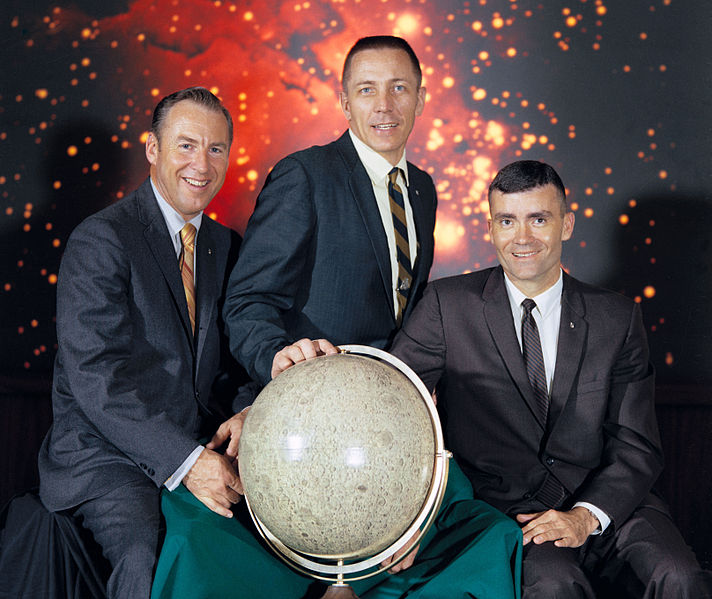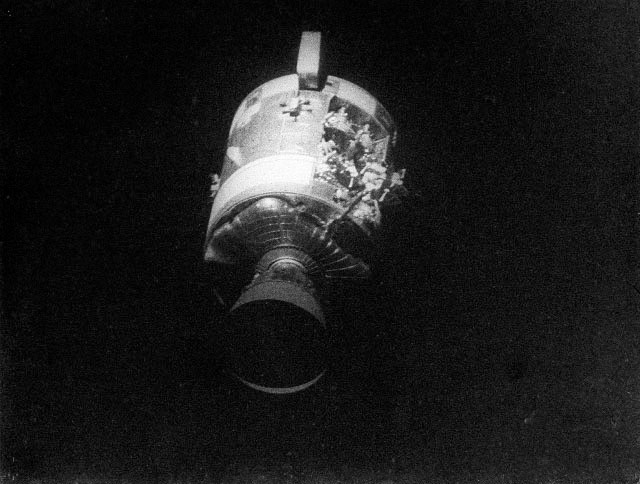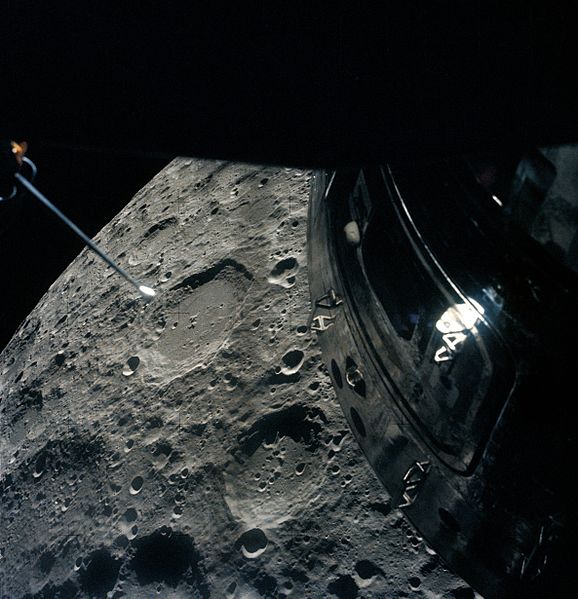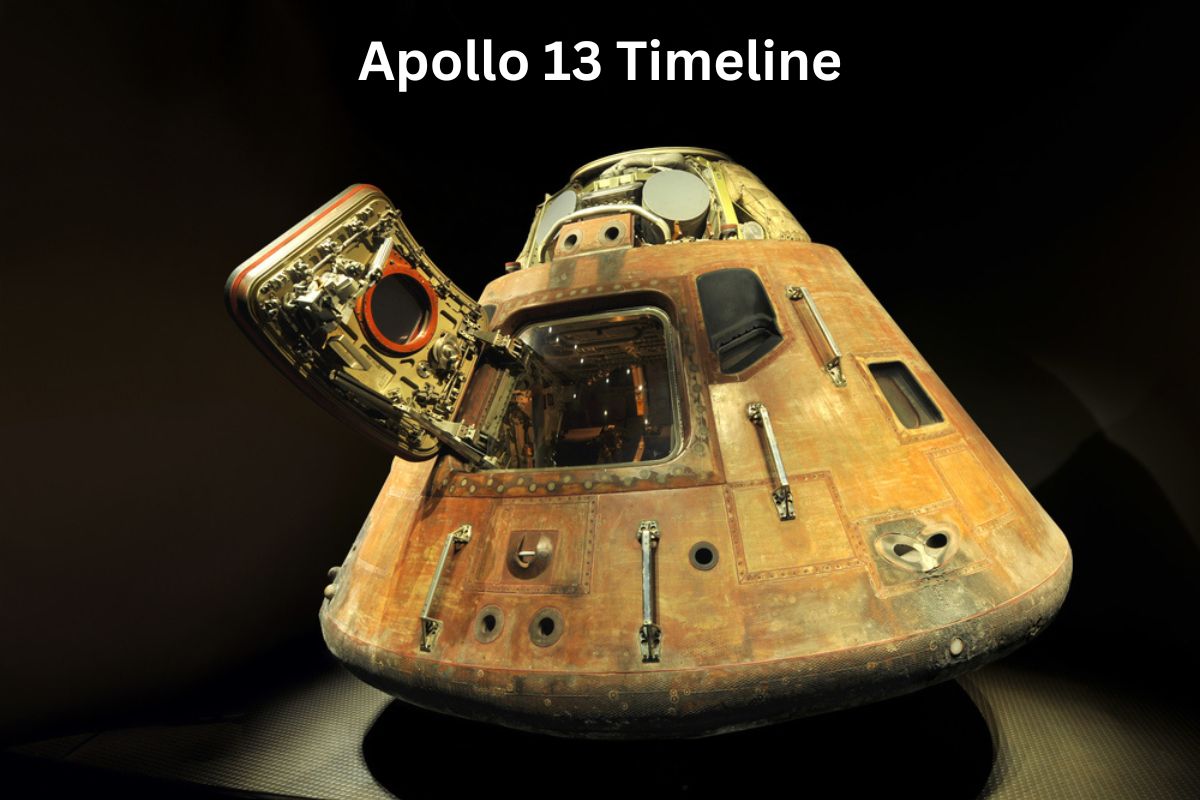The Apollo 13 mission, launched by NASA on April 11, 1970, was intended to be the seventh crewed mission in the Apollo program and the third to land astronauts on the Moon.
However, it is best known for the unexpected and life-threatening challenges it encountered during its journey to the Moon.
A catastrophic oxygen tank explosion in the service module forced the crew to abort their lunar landing and triggered a remarkable display of teamwork, innovation, and adaptability as NASA and the Apollo 13 astronauts worked together to ensure their safe return to Earth.
Despite the mission’s change in objectives, it stands as a testament to human determination and problem-solving in the face of adversity in space exploration.
| Date | Event |
|---|---|
| April 11, 1970 | 13:13 UTC: Apollo 13 is launched from Kennedy Space Center in Florida with a crew of three astronauts |
| April 13, 1970 | Approximately 56 hours into the mission, while en route to the Moon, an oxygen tank in the service module (SM) explodes, causing a loss of electrical power and a critical life support system failure. |
| April 14, 1970 | The explosion forces the crew to abort the lunar landing and use the Lunar Module (LM) as a “lifeboat” to provide life support and propulsion for the return journey to Earth. The damaged Service Module is jettisoned. |
| April 15, 1970 | The Lunar Module “Aquarius” is used as a lifeboat to provide life support and propulsion for the crew. The astronauts perform a critical course correction burn using the Lunar Module’s engine to adjust their trajectory for a safe return to Earth. |
| April 17, 1970 | The Lunar Module’s descent engine is fired to increase their speed for re-entry into Earth’s atmosphere. The Command Module “Odyssey” is powered up for re-entry. |
| April 17, 1970 | 18:07 UTC: Apollo 13 re-enters Earth’s atmosphere. 18:45 UTC: The Command Module splashes down safely in the Pacific Ocean. The crew is successfully recovered by helicopter and taken aboard the USS Iwo Jima. |
Timeline of Apollo 13
April 11, 1970 – 13:13 UTC: Launch from Kennedy Space Center
On April 11, 1970, at 13:13 UTC, the Apollo 13 mission was launched from Kennedy Space Center in Florida.
This mission was the seventh in NASA’s Apollo program and had the goal of landing astronauts on the Moon. The crew for this mission consisted of three astronauts:
- James A. Lovell Jr. (Commander)
- John L. Swigert Jr. (Command Module Pilot)
- Fred W. Haise Jr. (Lunar Module Pilot)
The spacecraft used for the mission consisted of two main components: the Command Module (CM), named “Odyssey,” which housed the crew, and the Lunar Module (LM), named “Aquarius,” which would take them to the lunar surface.

April 13, 1970 – Oxygen Tank Explosion
Approximately 56 hours into the mission, while Apollo 13 was en route to the Moon, a catastrophic event occurred. An oxygen tank in the Service Module (SM) exploded.
Also Read: Facts About Apollo 13
This explosion resulted in a loss of electrical power and a critical failure in the life support system of the spacecraft. The exact cause of the explosion was a combination of electrical faults and design issues with the oxygen tank.
April 13, 1970 – Abort of Lunar Landing
As a result of the explosion and the severe damage to the Service Module, the planned lunar landing had to be aborted. The crew’s safety became the top priority, and their focus shifted to safely returning to Earth.
The Lunar Module, “Aquarius,” was repurposed as a “lifeboat” to provide life support and propulsion for the return journey.
April 14, 1970 – Use of the Lunar Module as a Lifeboat
With the Service Module rendered inoperable due to the explosion, the Lunar Module, “Aquarius,” played a crucial role in keeping the crew alive.
Also Read: Famous Spacecraft
It became their makeshift shelter and source of life support, including oxygen and power. The Lunar Module’s descent engine was used for mid-course corrections and adjustments to the return trajectory.

April 14, 1970 – Jettisoning of the Damaged Service Module
In an effort to increase the distance between the crew and the damaged Service Module, it was jettisoned. The Service Module was no longer needed for the remainder of the mission, and it was separated from the Lunar Module, which continued to be the primary spacecraft for the return journey.
April 15, 1970 – Use of the Lunar Module for Life Support and Propulsion
With the damaged Service Module jettisoned, the Lunar Module “Aquarius” continued to serve as the primary spacecraft for the crew’s return journey to Earth.
It provided the astronauts with life support, including oxygen, temperature control, and a stable environment.
The Lunar Module’s descent engine was used for propulsion and critical course corrections to ensure the spacecraft followed the correct trajectory for re-entry into Earth’s atmosphere.
April 17, 1970 – Descent Engine Firing for Earth Re-entry
As Apollo 13 approached Earth, a critical maneuver was required to increase its speed for re-entry into Earth’s atmosphere.
The Lunar Module’s descent engine was fired to perform this maneuver successfully. This engine burn was crucial in ensuring the spacecraft entered Earth’s atmosphere at the right angle and speed.

April 17, 1970 – Power-Up of the Command Module (Odyssey)
In preparation for re-entry, the Command Module “Odyssey” was powered up. The crew transferred from the Lunar Module, which had served as their lifeboat, back to the Command Module for re-entry and splashdown.
The Command Module was designed to withstand the intense heat and forces of re-entry into Earth’s atmosphere.
April 17, 1970 – Re-entry and Splashdown
At approximately 18:07 UTC, Apollo 13 re-entered Earth’s atmosphere. The precise timing of re-entry was critical to ensure a safe return.
At 18:45 UTC, the Command Module splashed down safely in the Pacific Ocean, approximately 4 miles from the recovery ship USS Iwo Jima. The splashdown location was carefully calculated to ensure a smooth and controlled recovery process.
April 17, 1970 – Successful Recovery
After splashdown, the crew members remained inside the Command Module, which was designed to stay afloat. Helicopters were dispatched from the recovery ship USS Iwo Jima to retrieve the astronauts.
The recovery was executed flawlessly, and all three astronauts were successfully recovered by helicopter and taken aboard the USS Iwo Jima.
